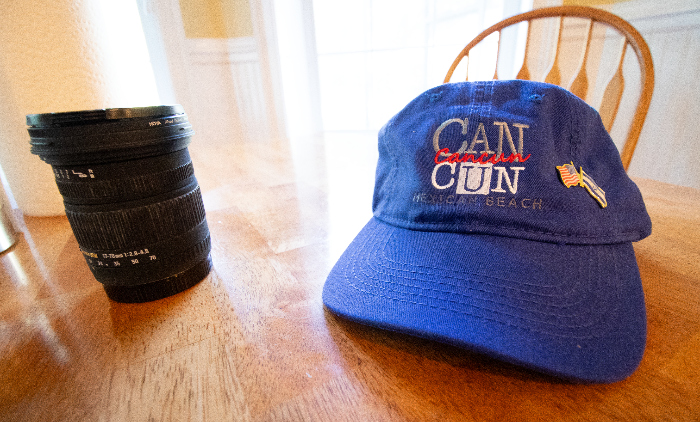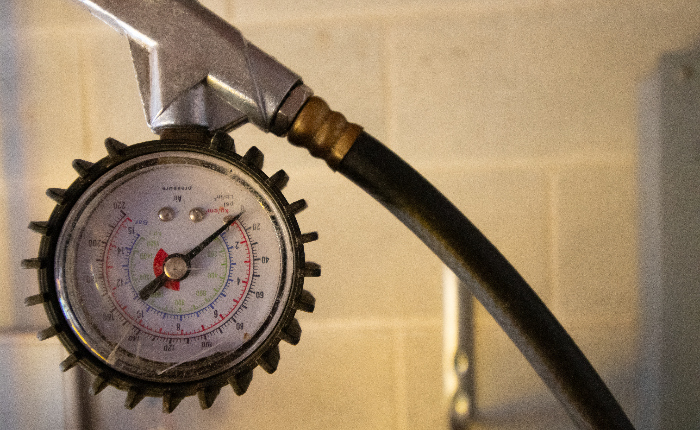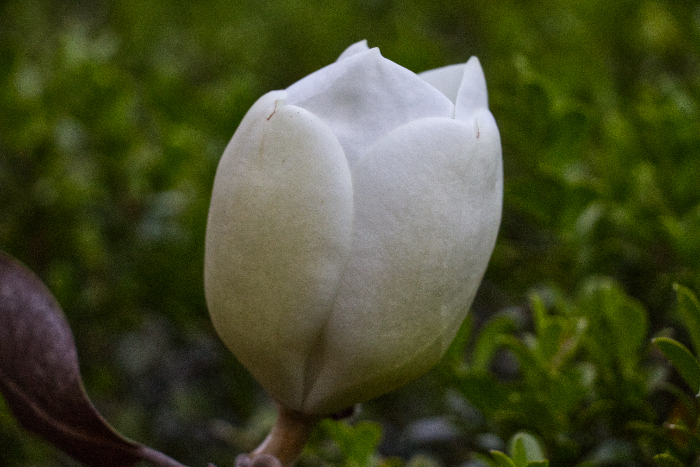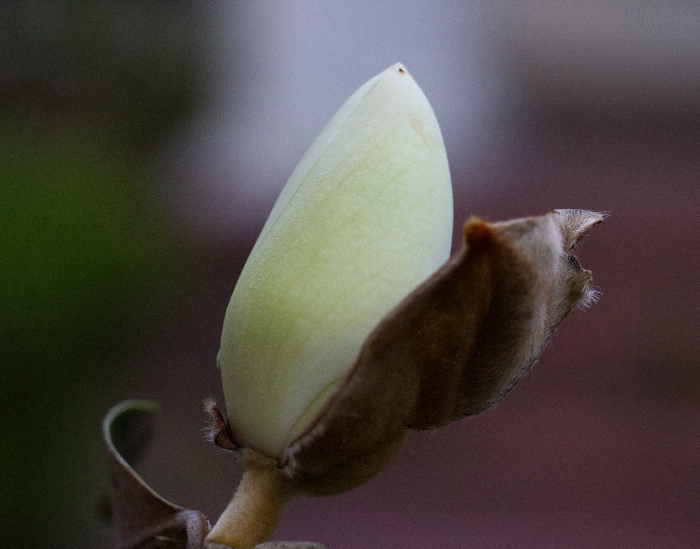Alchemy
April 25th, 2024Yard and Household Junk Fills in for Professional Models
As part of my preparation for a foreign trip which has been either delayed or canceled due to the difficulty of getting a visa for my wife, I improved my camera equipment. I got a better strap for my Canon 200D, and I got two zooms. A 10-18mm and an 18-135mm. I have been fooling with them. Might as well learn how to shoot, even if I have to do it in my yard for the time being.
The theory behind buying lenses for a 2017 camera which is not as good as my 2023 camera is that the 200D is lighter and would be less painful to lose than the new one. It will take excellent photos, even if the new camera might do somewhat better. Sometimes excellent is good enough.
I thought the wide lens would be good for indoor pictures in certain circumstances. You don’t always have the ability to back up far enough to take a scene in with a long lens, so you can lose shots. Someone questioned my choice, wondering why anyone would travel with a wide lens. I don’t know much about the subject, but it seems to me anyone who spends a lot on important trips would want versatility instead of falling back on a cell phone to take shots his camera’s only lens couldn’t handle.
I figured the longer zoom would be very, very versatile, so even if it didn’t give me the absolute best image quality, it would be a good choice for travel. Again, excellent can be okay.
As for what “best,” means, I don’t know. A lot of people are obsessed with super-sharp photos, and the zoom I turned down when I got the 18-135mm is sharp. It looks like a lot of lenses that aren’t considered very sharp these days are actually sharper than overly-picky people let on. Also, there is a program called Topaz that can improve the apparent sharpness of photos. I guess it’s a cheat, but then every digital camera is a big box of cheat.
There is a lot more to good photography than brutal sharpness, and sometimes you want a photo to be a little less forward-looking.
A lot of history’s best-loved photos aren’t extremely sharp.
I took a few shots with each lens. I’ll be trying to do more.
I really like photography, and I should have gotten more deeply into it 18 years ago, when I got my first real DSLR. Had I done that, I would have a huge collection of great photos now, and I would know more about creating great photos.
Here’s something weird: editing and looking at my own photos is extremely relaxing. I don’t know why. I can sit and stare at a photo I shot for a long time, feeling my blood pressure drop, even if the photo isn’t really good. This isn’t true of every photo I take, but it’s true of the ones that have some not-always-definable qualities I like.
I was desperate for things to shoot today. The light was fading when I started, and there wasn’t much out there. Or maybe I didn’t have the imagination to see what was out there. I took some shots of a few objects to see what the lens could do.
When I came in, I fiddled with editing software. I have started shooting raw files, which means my camera saves files just as it sees them. Ordinarily, cameras save in formats like jpg, which are actually pre-edited by the cameras to make them look better. A jpg may look nice, but when a jpg is created, you lose a lot of data, and that limits what you can do when you edit.
I wanted editing software so I could shoot raw, so I looked for advice, and I ended up getting Adobe Photoshop Elements. I don’t like it. The interface makes no sense at all, so I am constantly having to figure out how to do what I want to do.
Another problem: for some reason, Adobe’s program damages raw files as you edit. When you edit a text document, there is no permanent change until you save it. When you edit a photo with Photoshop, the file is changed, so you lose things. That’s annoying. There has to be some reason for it, but it sounds stupid to me.
Right now, I’m trying Affinity Photo 2, a competitor’s program. Unlike Photoshop, it can be bought. You can only rent Photoshop, and it costs $10 per month. Next year, it will probaby cost more. You can get Affinity Photo 2 a lot cheaper, paying only once.
My understanding is that Photoshop is better, but I’m not a pro, and I’m not doing extreme things. I crop and fiddle with color and sharpness and so on. I’m not trying to simulate psilocybin trips. I may end up buying Photo 2.
I think Adobe’s Lightroom would have been better than Photoshop. I made a good effort to find out what I needed, and Photoshop came out on top, but now I think I was wrong. Lightroom is supposed to be less powerful but easier to use, and it helps you organize photos. Lightroom is another rent-only program, so I am averse to trying it.
You know what they say. “You will own nothing, and you will be happy.” Yeah, and arbacht macht frei. Saying something stupid to people you want to control doesn’t make it true.
I like owning stuff.
I’ll put up a few photos I really like looking at. First, the 10-18mm zoom, and then the 18-135mm.
Here is a hat I bought in Cancun, along with a 2006 DSLR lens I haven’t been able to cleanse of cockatoo dust.
Don’t ask me why. I enjoy looking at it. The composition could be better, and the only story the photo tells is, “I needed to take a picture to test a lens,” but I still like it.
I took a shot of a tire inflator in my workshop. It’s sort of a macro shot, which is not what you should do with a wide lens, but it was there, so I took the picture. The detail is not too bad, considering. The shot you see is not as clear as the original, because I reduced the size a great deal so I could post it.
These shots were edited, painfully, with Photoshop.
While I was shooting with the 18-135mm, I found a few objects I could use. Once again, I acted like I had a macro lens. I shot a couple of magnolia blossoms. I edited the shots in Photo 2.
I didn’t think much of these photos when I took them. I was just trying to see what the lens would do. After I edited them, though, I found them oddly engrossing.
I boosted the color a little, and I increased “clarity,” which may be the same thing as sharpness for all I know. Jacking up clarity brought out the weird veiny features in the petals. If you bring them out too much, the blossoms start to look like something from a Frankenstein movie.
They don’t really look like they do in these photos, and I guess that’s what makes photography an art.
The lens I used is not supposed to create bokeh, the creamy blurriness you see in the background of the second shot, but I tried to create it, and I got it. Not sure how that happened.
I thought these shots would be terrible, because I wasn’t thinking much about composition and so on, but they’re much more pleasing than expected.
I’m going to try to get out there and shoot more stuff. I have a habit of shooting small things, because the big things I have around here aren’t that interesting. I need to try to make them interesting.
I think this is a great hobby for people who want to decorate their houses but don’t want to spend a lot on art. A good original photo, blown up to painting size, runs about $17, and it’s a lot more interesting than a cheesy Van Gogh print or a lithograph by some artist who never sold anything for more than $500 except maybe a lawnmower on Craigslist.
If you photograph people you care about, so much the better.
I don’t plan to put photos of the wife up here, but we have 4 huge photos of us on our walls, and there will be more. I also have shots of friends and their kids, as well as my pets.
This is not a hard hobby. It may be hard for me to create pictures other people like or respect, but I can take photos I like all day long.




April 26th, 2024 at 7:25 AM
I agree with you that a wide lens is frequently needed. Particularly here in the southeast where there are so many trees. Lightroom would probably have been better, but Affinity Photo gets good reviews. I use Capture One, which also does non-destructive
April 26th, 2024 at 7:27 AM
Editing, but that’s probably overkill for you. Sorry for the fat fingers hitting post too early.